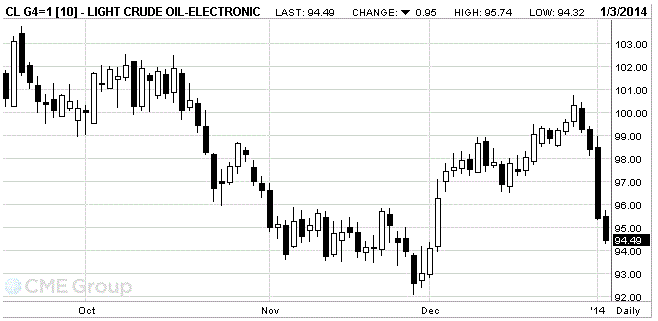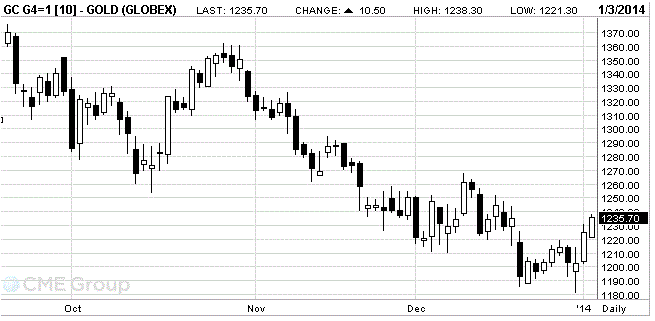Notícias do Mercado
-
16:40
Oil: an overview of the market situation
Oil prices fell today , while dropping to one-month low (mark WTI), after a report showed that inventories of gasoline and distillates rose , and production increased .
Futures fell 1.1 percent after the Energy Department data on changes in stocks in the week December 23-29 showed that:
- Oil reserves fell by 7.007 million barrels to 360.567 million barrels ;
- Gasoline inventories rose by 0.844 million barrels . to 220.716 million barrels . ;
- Distillate stocks increased by 5.042 million barrels . to 119.147 million barrels .
- Refining capacity utilization rate of 92.4 % against 92.7 % a week earlier .
Distillate stocks are forecast should grow by 750 thousand , while gasoline inventories had to climb the 1,000 barrels , according to the average of eight analysts in the survey responses . Gasoline stocks are projected to increase 1.38 million As for oil , they are estimated to have been reduced by 2.83 million In addition, it was reported that U.S. production increased by 10,000 barrels per day to 8.12 million barrels , while reaching the highest level since 1988.
Price dynamics also affect the growth expectations of the Libyan demand. Libya hopes to resume production at one of its largest oilfields - El Shararah west of the country , within three days after the protesters agreed to suspend their two-month strike .
Experts note that the increase in oil exports from OPEC , which has fallen to less than 250,000 barrels per day from 1.4 million barrels per day in July , will stimulate supply and put pressure on prices.
February futures price of U.S. light crude oil WTI (Light Sweet Crude Oil) fell to $ 94.49 a barrel on the New York Mercantile Exchange.
February futures price for North Sea Brent crude oil mixture fell $0.75 to $107.07 a barrel on the London exchange ICE Futures Europe.

-
16:20
Gold: an overview of the market situation
Gold prices rose moderately today , reaching in this two-week high as traders began to return to the market after prices fell to a six-month low . We add that the weakness in the stock market has also stimulated demand for the metal as a safe haven . Who sent the precious metal to its largest weekly increase since October , after fixing its biggest annual decline in 32 years.
Analysts warn, however , that the upward momentum in the first days of the new year may last only a few weeks, after which prices continue to decline, and will close in 2014 another drop . Recall that during quantitative easing by the U.S. central bank have been favorable for gold , keeping interest rates and stoking inflation fears . But with the improvement of the U.S. labor market and other positive signs in the economy , the Fed decided to fold stimulation, which negatively affected the attractiveness of gold.
Meanwhile , we add that the rise in prices helps active demand for the precious metal in China
" Trading volume is slowly recovering as traders return from the holidays, and talks about the major Chinese purchases of gold coming from Hong Kong, improved mood , helping rally in Asian session " , - said Joyce Liu of Phillip Futures. She believes that gold prices will meet resistance at 1244 dollars per ounce , which can be tested for strength later on Friday . However, in the medium term, analysts remain negative expectations regarding gold prices.
The course of trade also affected the data for China , which showed that the index measuring the non-productive business activity amounted to a seasonally adjusted 54.6 in December.
The main indicator remains above the neutral mark of 50 that separates expansion from contraction, although the value has declined sharply in December from 56.0 in November.
Cost February gold futures on the COMEX today rose to $ 1235.70 per ounce.

-
06:26
Commodities. Daily history for Jan 2’2013:
Gold $1224.00 +21.70 +1.8%
Oil $95.64 -2.78 -2.82%
-